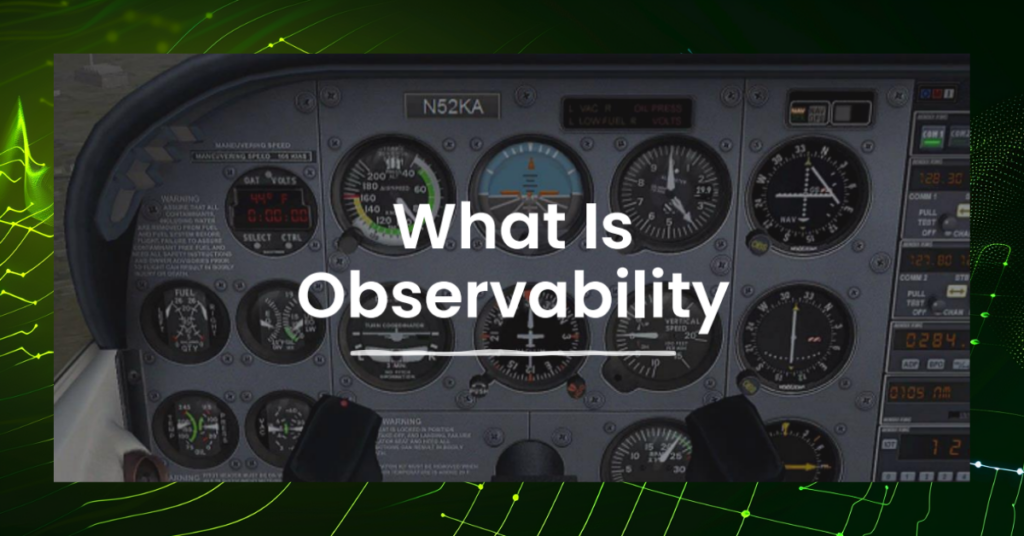Observability has become a cornerstone of modern software development, but implementing and effectively utilizing observability solutions can be fraught with challenges. This post explores common hurdles organizations face and provides insights into how Coroot can address them.
Common observability challenges
Deploying and managing observability systems often presents significant obstacles:
- Firstly, the process of installation and configuration is often complex and resource-intensive. This frequently leads to incomplete coverage of system components.
- Secondly, the diversity of infrastructure components within large organizations, ranging from bare metal to serverless applications, makes comprehensive observability difficult to achieve. This combination often results in “Swiss cheese observability,” where certain system areas lack adequate monitoring.
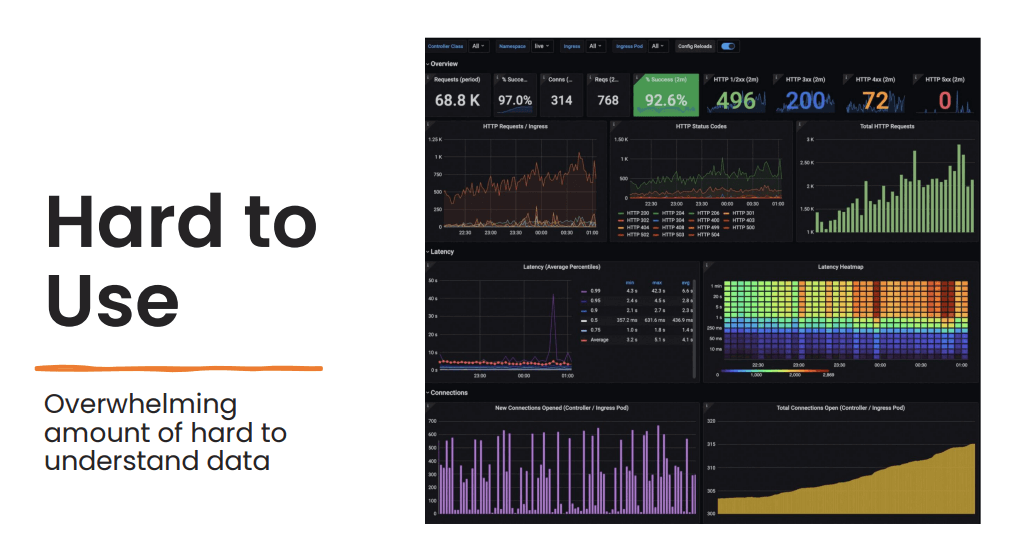
The sheer volume of data generated by observability tools can be overwhelming. This data overload, coupled with the complexity of understanding and interpreting metrics, often hinders effective analysis, especially for developers who are not observability experts.
In larger organizations, multiple teams using different tools can create silos and hinder collaboration. This can lead to finger-pointing and a lack of accountability when issues arise.
Observability challenges: Noise, overhead, and organizational issues
Beyond deployment and coverage challenges, observability systems often grapple with noise, overhead, and organizational issues.
Excessive alert volume is a common problem, leading to alert fatigue and ultimately, ignored alerts. This directly impacts incident response times, user experience, and team morale.
Another challenge stems from the performance overhead associated with instrumentation. Especially for data-intensive operations like tracing, the volume of generated data can be substantial, requiring efficient storage and processing. This often necessitates trade-offs between data granularity and system performance.
The cost of observability and the Coroot solution

Observability tools, especially cloud-based solutions, have become increasingly expensive. This is driven by the growing recognition of observability as a critical component of modern infrastructure. Companies like Cisco acquiring Splunk exemplify the trend of consolidation and potential price increases in the market.
The Coroot advantage

Coroot positions itself as an alternative to costly proprietary solutions by offering an open-source and open-core model. It addresses several key challenges in the observability space:
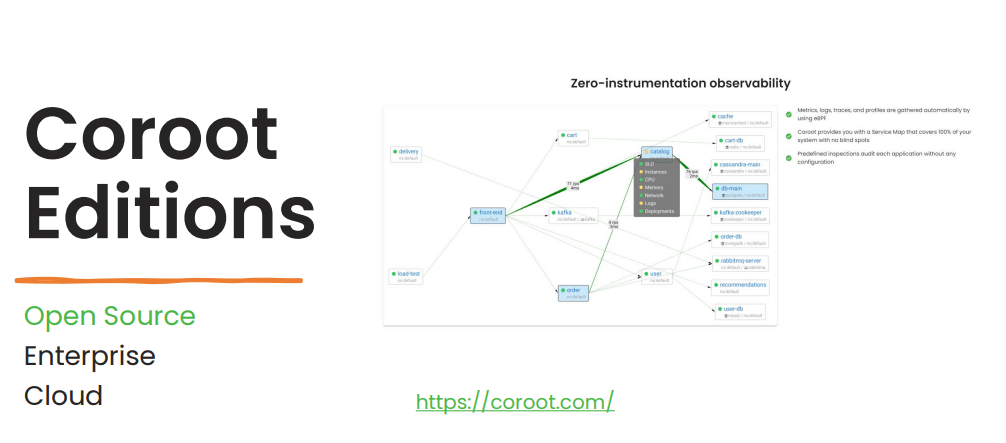
- Simplified deployment: Leveraging eBPF, Coroot automates much of the instrumentation process, reducing the time and effort required to get started.
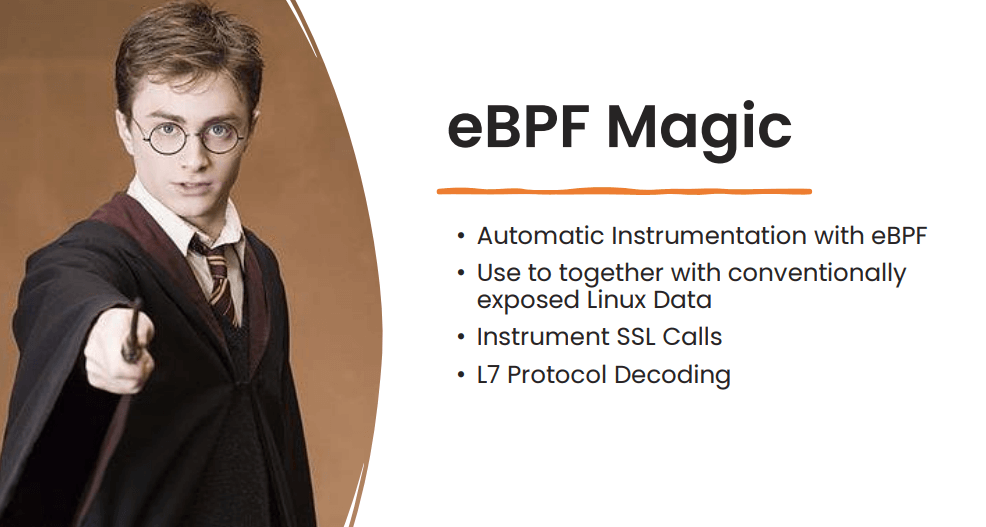
- Comprehensive coverage: Coroot supports a wide range of infrastructure environments, from Kubernetes to bare metal, ensuring broad visibility.
- Cost optimization: By providing insights into resource utilization and identifying inefficiencies, Coroot can help organizations reduce cloud spending.
- Database performance analysis: Coroot offers deep-dive analysis of database performance, helping to pinpoint query-level issues.
By addressing these challenges, Coroot aims to provide a more accessible and cost-effective observability solution while delivering robust insights.
Designing an effective observability solution
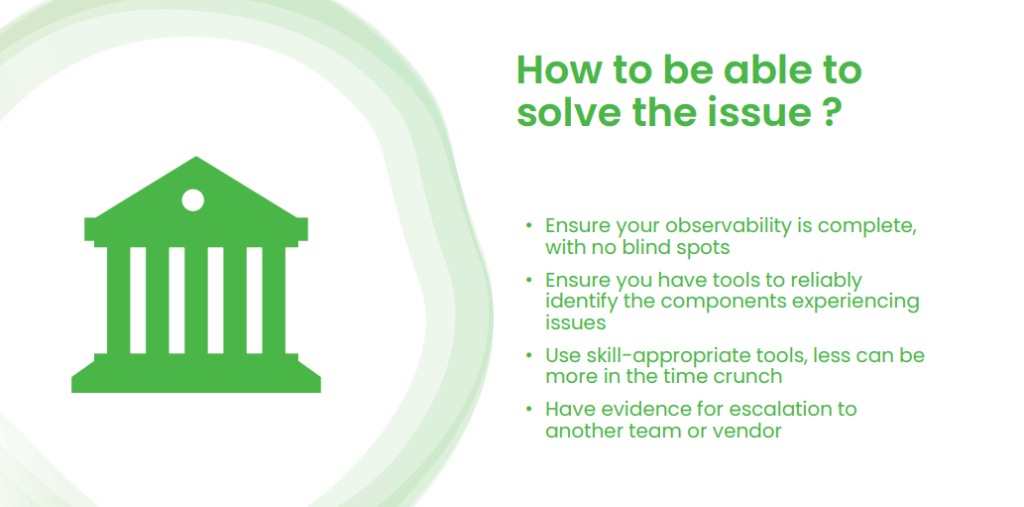
Key considerations
Building a robust observability solution requires careful planning and consideration. Based on the information provided, here are some critical factors to consider:
- Comprehensive coverage: Ensure your solution covers all essential components of your infrastructure, from bare metal to cloud-native environments.
- Data-driven insights: Focus on collecting and analyzing data that directly impacts system performance and user experience. Avoid information overload.
- Actionable alerts: Prioritize alerts based on their impact on business objectives and user experience.
- Cost optimization: Balance the need for comprehensive observability with cost constraints by leveraging efficient tools and data management practices.
- Continuous improvement: Regularly evaluate and refine your observability strategy based on evolving system requirements and insights gained from data analysis.
Additional recommendations:
- Standardization: Adopt standardized metrics, logs, and trace formats to facilitate data integration and analysis.
- Automation: Automate data collection, processing, and alerting to reduce manual effort and improve efficiency.
- Collaboration: Foster collaboration between development, operations, and security teams to ensure effective observability.
- Incident response: Integrate observability with incident management processes to accelerate problem resolution.
- Security: Implement appropriate security measures to protect sensitive observability data.
Conclusion
By understanding and addressing the common challenges associated with observability, organizations can significantly improve their ability to monitor, troubleshoot, and optimize complex systems. Coroot offers a powerful solution by combining advanced technology with a user-centric approach.
By adopting a holistic view of observability and leveraging tools like Coroot, organizations can break down silos, reduce costs, and ultimately deliver better software and services to their customers.
We would like to thank Peter Zaitsev for this insightful webinar on the importance of observability.




